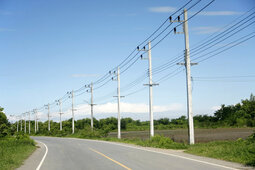fmeili1
Solar Enthusiast
I'm thinking about how to protect my appliances in case one or more of the MOSFETs/IGBTs in the H-bridge break and there is a continuous high DC voltage at the AC output of such an inverter.
I've already installed AC surge protectors on the AC-out of the inverter to just protect AC surges. But I'm sure they will not protect against (high) DC voltage on the output side (the high DC voltage from the DC-bus will usually be the same as the AC peak voltage of the AC sine wave, so I'm pretty sure, the AC surge protector will not do anything in such a case).
I don't know if usual non-isolated off-grid HF-inverters do have a DC protection integrated on their AC-out side.
Does a kind of special breaker/protector device exists to install it on the output of my AC-out's to protect against DC voltage (I think even a lower than DC bus-voltage would hurt some appliances so it will not be enough to just protect about high DC voltage, it should detect and trip in a wide range of DC voltages maybe >1VDC or >5VDC or >12VDC or something else... I don't know)?
From the electrical basics, a simple inductor between L and N on the output side of the inverter could be used to produce a short in case of DC voltage, which may trip the overcurrent protection inside the inverter (which hopefully exists?) - but I don't know if this is the best idea.
Maybe the scenario described doesn't really exist and/or doesn't cause any problems at all and I'm just thinking that this could be a problem...
Can someone shed some light to this?
I've already installed AC surge protectors on the AC-out of the inverter to just protect AC surges. But I'm sure they will not protect against (high) DC voltage on the output side (the high DC voltage from the DC-bus will usually be the same as the AC peak voltage of the AC sine wave, so I'm pretty sure, the AC surge protector will not do anything in such a case).
I don't know if usual non-isolated off-grid HF-inverters do have a DC protection integrated on their AC-out side.
Does a kind of special breaker/protector device exists to install it on the output of my AC-out's to protect against DC voltage (I think even a lower than DC bus-voltage would hurt some appliances so it will not be enough to just protect about high DC voltage, it should detect and trip in a wide range of DC voltages maybe >1VDC or >5VDC or >12VDC or something else... I don't know)?
From the electrical basics, a simple inductor between L and N on the output side of the inverter could be used to produce a short in case of DC voltage, which may trip the overcurrent protection inside the inverter (which hopefully exists?) - but I don't know if this is the best idea.
Maybe the scenario described doesn't really exist and/or doesn't cause any problems at all and I'm just thinking that this could be a problem...
Can someone shed some light to this?




